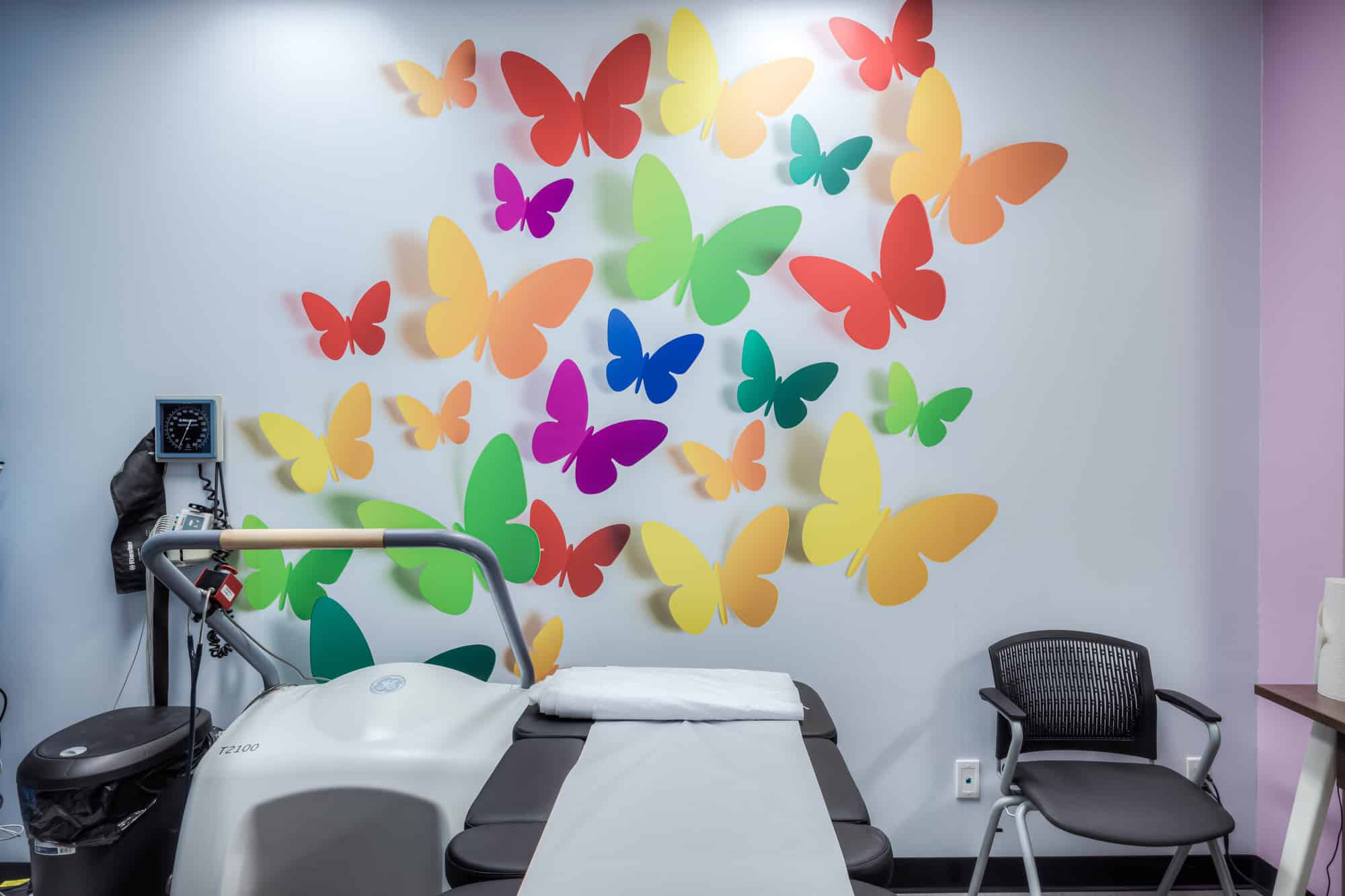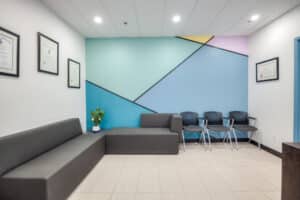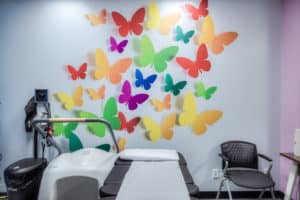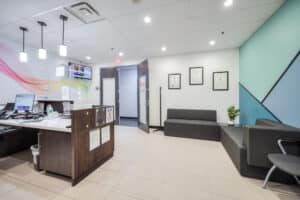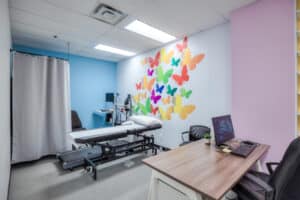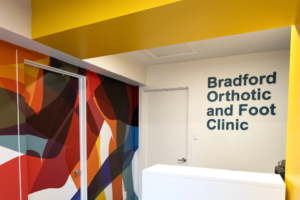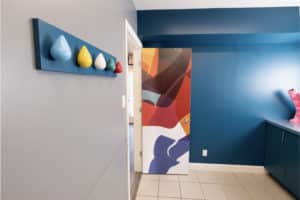Most of us perceive hospitals and clinics as plain and boring. Which leads us to the question – is healthcare interior design really important?
From hospitals to clinics, the design of medical spaces directly impacts patient well-being, staff productivity, and overall satisfaction. A well-thought-out healthcare space can make a world of difference through calming colors, ergonomic layouts, or biophilic elements. Let’s learn more about healthcare interior design and how healthcare interior designers, clinic office design, and healthcare interior design services are transforming medical facilities into healing sanctuaries.
What Is Healthcare Interior Design?
Healthcare interior design focuses on creating spaces that meet the unique needs of patients, healthcare providers, and visitors alike. It’s a specialized field that considers not only functionality but also the psychological and emotional impact of the environment. A well-designed healthcare space can reduce stress, improve recovery times, and enhance the overall experience for everyone who steps inside.
For example, incorporating natural light into a hospital room can help regulate patients’ circadian rhythms, aiding in faster recovery. Similarly, ergonomic furniture in clinic offices ensures that staff can work efficiently without physical strain. Every design choice—from layout to materials—plays a role in shaping how people interact with the space.
Key Principles of Healthcare Interior Design
Patient-Centered Design:
At its core, healthcare interior design prioritizes the needs of patients. This means creating spaces that are accessible, comfortable, and easy to navigate. Features like private rooms, soundproofing for quietness, and intuitive wayfinding systems help reduce anxiety and make patients feel more at ease.
Biophilic Elements:
Nature-inspired design is a growing trend in healthcare interiors. Incorporating greenery, natural materials like wood or stone, and views of the outdoors has been shown to lower stress levels and improve mood. Even small touches like potted plants or nature-themed artwork can make a big difference.
Color Psychology:
Colors have a profound impact on emotions and behavior. Soft blues and greens create a calming effect, while warmer tones like yellows can evoke feelings of warmth and positivity. For pediatric clinics, vibrant colors add energy and playfulness to the environment.
Hygiene and Durability:
Healthcare spaces must adhere to strict hygiene standards. Materials like antimicrobial surfaces, seamless flooring, and non-porous countertops are essential for preventing the spread of infections while maintaining durability in high-traffic areas.
Ergonomics:
From adjustable workstations for staff to comfortable seating for patients, ergonomic design ensures that every user interacts with the space effortlessly. This is especially important in clinic office design where efficiency is key.
Technology Integration:
Modern healthcare relies heavily on technology for diagnostics, treatment, and communication. Seamlessly integrating these technologies into the design ensures they enhance functionality without overwhelming the space visually or acoustically.
The Role of Healthcare Interior Designers
A professional healthcare interior designer plays a vital role in transforming medical spaces into functional, safe, and welcoming environments. Their expertise lies in balancing aesthetics with practicality while adhering to strict industry regulations. They optimize layouts to improve patient flow, select materials that meet hygiene standards, and incorporate design elements that promote well-being for both patients and staff.
For instance, in clinics, designers often focus on creating waiting areas with comfortable seating arrangements and calming decor to reduce patient stress. In hospitals, their work may involve designing single-occupancy rooms equipped with personalized touches like adjustable lighting or family-friendly seating to enhance comfort and privacy. Across all healthcare settings, these professionals ensure compliance with safety codes and regulations while delivering spaces that feel warm, human-centered, and conducive to healing.
Clinic Office Design: Small Spaces with Big Impact
Clinic office design is a specialized subset of healthcare interior design that focuses on smaller-scale facilities such as outpatient clinics or private practices. These spaces require thoughtful planning to maximize functionality within limited square footage while maintaining a welcoming atmosphere for patients.
A key aspect of clinic office design is creating inviting waiting areas. Comfortable seating paired with calming colors and natural elements can help ease patient anxiety while they wait for their appointments. Examination rooms are another critical focus area, where ergonomic furniture ensures comfort for both patients and practitioners during consultations. Additionally, administrative zones must be efficiently organized to streamline operations while maintaining privacy for sensitive information.
A well-designed clinic office not only reflects professionalism but also creates an environment where patients feel cared for and at ease. Thoughtful design choices tailored to the specific needs of the practice can make even the smallest clinic feel functional, comfortable, and inviting.
How Healthcare Interior Design Services Transform Spaces
Engaging professional healthcare interior design services ensures a comprehensive approach to creating functional yet visually appealing medical spaces. These services typically include:
- Space Planning: Optimizing layouts for better patient flow and staff efficiency.
- Material Selection: Choosing durable yet attractive finishes that meet hygiene standards.
- Custom Solutions: Tailoring designs to reflect the unique identity of each facility.
- Project Management: Overseeing timelines and budgets for seamless execution.
By leveraging these services, healthcare providers can transform their facilities into environments that promote healing while meeting operational goals.
Key Takeaways
- Healthcare interior design is about creating environments that promote healing while supporting functionality.
- Key principles include patient-centered layouts, biophilic elements, color psychology, hygiene-focused materials, ergonomics, and technology integration.
- Professional healthcare interior designers optimize space utilization while ensuring compliance with industry regulations.
- Clinic office design focuses on creating efficient yet welcoming environments tailored to smaller-scale medical facilities.
The Bottomline
Healthcare interior design is about more than just making spaces look good—it’s about creating environments where people feel safe, cared for, and inspired to heal. Whether it’s a large hospital or a small clinic office design project engaging professional healthcare interior designers ensures your space meets both functional requirements and emotional needs effectively.
By prioritizing thoughtful designs tailored specifically for patients’ comfort alongside staff efficiency—healthcare facilities can truly become sanctuaries of healing innovation!
Frequently Asked Questions (FAQ):
Why is healthcare interior design important?
It enhances patient experiences by creating calming environments that reduce stress while improving recovery times. It also supports staff productivity through efficient layouts and ergonomic solutions.
How do healthcare interior designers ensure compliance?
They stay updated on industry regulations related to safety standards (e.g., fire codes), accessibility (ADA compliance), infection control protocols (non-porous surfaces), and more.
How does interior design impact patient healing and recovery?
Thoughtful design choices—like calming colors, natural light, and soothing materials—create a positive atmosphere, reduce anxiety, and support healing. Research shows that a comforting environment can improve patient outcomes.
